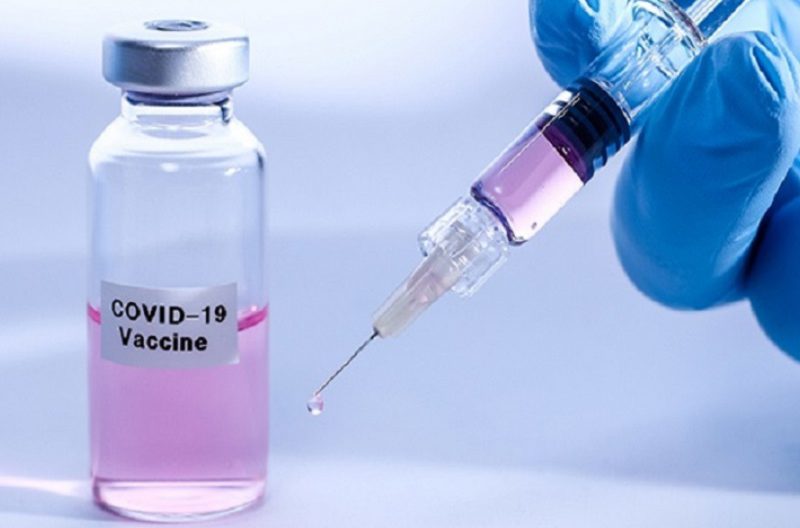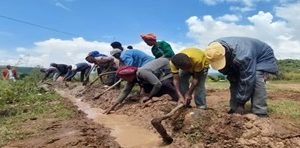
BY STAFF REPORTER
It is almost 20 months since COVID-19 pandemic has placed an unprecedented burden on the global communities through paralyzing their healthcare systems, economies, and limiting their social interactions. Pandemic’s fallout though differ from region to region and from countries to countries, poorer countries are suffering a lot following their fragile economies, weak healthcare systems, and other challenges that can aggravate the spread of the virus.
In fact, the development of COVID-19 vaccines has beamed hope of rays in mitigating the spread of the pandemic. However, for those poorer countries in which equitable vaccines’ distribution has become a daydream and vaccines’ segregation is unfolding before them, the development could not benefit them equally except amplifying further inequalities in countries. Sadly, most worlds’ wealthiest nations are hoarding the shots for their own populations leaving behind Africa which is the world’s second-largest and second-most populous continent, after Asia in both cases.
As Dr Ngozi Okonjo-Iweala, Director General of the World Trade Organization once stated, it was “not acceptable” to leave poorer countries at the “end of the queue” for vaccines.
According to her, it is of paramount importance to diversify vaccine manufacturing and to have more production taking place in Africa and Latin America to contain the COVID-19 pandemic
Whatever the reason, to end such disparity, the best remedy for Africa is building its own manufacturing capacity for vaccines, medicines and vital health technologies to meet its own needs for vaccines and other essential products.
WHO’s recent report stated referring to an interview with Biruk Abate Halallo, Africa is working to boost COVID19 manufacturing for vaccines and medicines.
As to Biruk Abate, Health Attaché at Ethiopia’s Permanent Mission to the United Nations Offices in Geneva also underscored the crucial importance of manufacturing medicines in Africa.
The driving force behind a resolution on the local manufacturing of medicines, medical technologies and vaccines that is being presented at the World Health Assembly, WHO’s leading decision-making body is presented as follows.
What is the resolution for?
According to the Health Attaché, Africa suffers more than its fair share of communicable and non-communicable diseases. Over 90 percent of the world’s malaria deaths and 70 percent of all people living with HIV/AIDS are in Africa. More access to good medicines could significantly reduce this needless human toll.
Ninety-five per cent of all medicines used in Africa are imported and the continent accounts for just three percent of all medicine production globally. The COVID-19 pandemic has further exposed Africa’s vulnerabilities in ensuring access to vital drugs, vaccines and health technologies and more and more African governments view the supply of safe, effective and affordable medicines and vaccines as a national security issue.
Boosting local production will save lives, boost public health and strengthen African economies, including supporting local jobs. It should also trigger the sharing of crucial technologies.
The full title of the resolution presented at the World Health Assembly was ‘Strengthening Local Production of Medicines and Other Health Technologies to Improve Access.’
It covers strengthening local production, promoting technology transfers and innovation and considering the agreement on Trade-Related Aspects of Intellectual Property Rights and intellectual property rights through the lens of boosting local production.
The resolution was co-sponsored by more than 100 WHO Member States, including 54 African countries.
What are the next steps?
WHO Member States and WHO must push on with the recommendations in the resolution.
Member States should align their national and regional policies and strategies around local production. This will help economies of all sizes build synergies, share the workload and avoid costly duplication.
African market integration and trade facilitation is crucial and African countries must make better use of regional economic integration platforms such as the Economic Community of West African States, the Common Market for Eastern and Southern Africa and The new African Continental Free Trade Agreement offer great opportunities.
More integration will help lead to the manufacturing of products that are in high demand in the region, will expand access to more markets and make local production sustainable.
Countries should formulate education policies that foster research and development in pharmaceuticals as well as encouraging thousands more people to gain skills to thrive in the industry. Countries must strengthen and harmonize their regulatory systems to ensure all medical products are of the highest quality and that local manufacturers adhere to international standards.
WHO should strengthen its role in providing leadership and direction in promoting the strategic use of quality and sustainable local production of medicines and other health technologies. It must keep up the technical support to Member States, as well as in developing policies, capacities and aiding partnership building and international collaboration.
To fully implement this resolution we need strong political commitment from WHO Member States. We need more public and private partnerships. Support from WHO and other partners is key and we may need additional resources and investment in infrastructure to get going.
What is Ethiopia doing to boost manufacturing at home?
There are 12 medicine manufacturers and 38 medical supply and device manufacturers working in Ethiopia and that are licensed by the Ethiopian Food and Drug Administration.
Building on this is a priority and with technical and financial support from WHO, we have developed a National Strategy and Plan of Action for Pharmaceutical Manufacturing Development. This was the first country-level adaptation of the vision of the African Union’s Pharmaceutical Manufacturing Plan for Africa which aims to catalyze local African pharmaceutical production.
Rolling out the strategy brings together key government ministries, regulatory agencies and other stakeholders and partners. It is run by a Steering Committee that is co-chaired by the Ministry of Health and the Ministry for Trade and Industry.
As part of this we are strengthening our regulatory capacity by reforming the National Regulatory Authority and have set up a new institute to support the pharmaceutical industry.
We are also supporting and encouraging domestic and international investment through shaping a conducive business environment. This includes offering incentives to encourage local manufacturing and setting up the Kilinto Pharmaceutical Industrial Park.
We’re also working to improve policy coherence, product diversification, human capital development and capacity building across the pharmaceutical sector.
How do you boost demand to sustain local manufacturing?
The key drivers of pharmaceutical demand in Ethiopia are population growth, economic growth, rising health coverage and efforts to address more and different diseases.
With over 112 million people and an annual population growth rate of 2.3 percent, Ethiopia is Africa’s second most populous nation. It has the fastest growing economy in the region, with growth averaging 9.4 percent a year from 2010 to 2020. As the spendable income of the population rises, so too does the demand for basic health services, including medicines.
The expansion of Ethiopia’s primary health care sector in the last 15 years has been hailed as a model in sub-Saharan Africa. Since 2003 we have worked to reach more communities and the percentage of women receiving antenatal care by a skilled provider increased from 27 percent in 2000 to 74 percent in 2019. Births in health facilities rose from 5 percent to 48 percent in that period.
Ethiopia has also introduced a community health insurance scheme in 75 percent of our districts. This has helped ensure communities engage with health services, which in turn drives demand for medicine’s and medical supplies.
Moreover, Ethiopia is undergoing an epidemiological transition from communicable diseases to non-communicable disease and injuries, and efforts to address all types of public health problems are changing the demand for medicines and health technologies.
THE ETHIOPIAN HERALD JULY 1/2021





